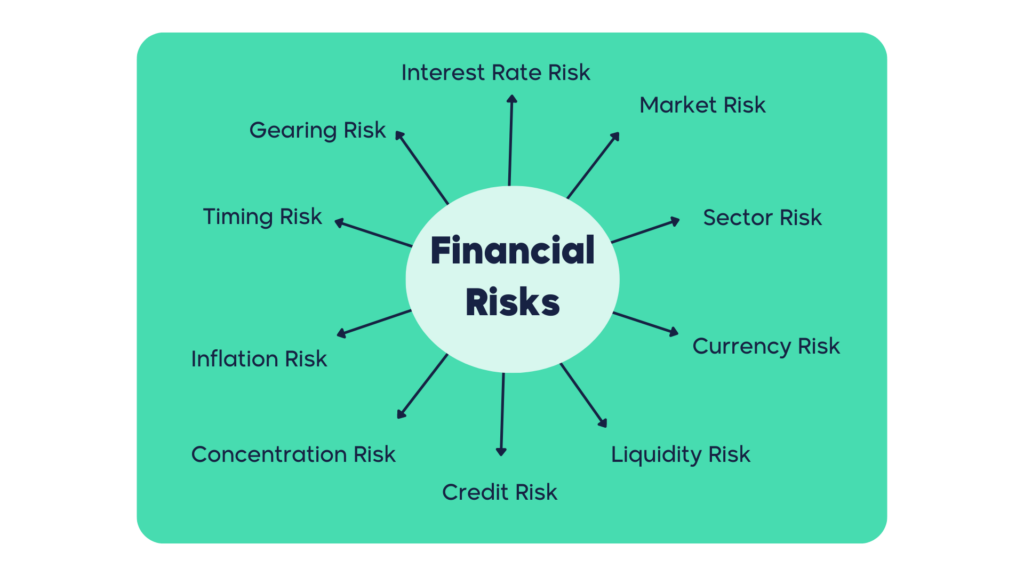Introduction
Small and medium-sized enterprises (SMEs) are crucial to Saudi Arabia’s economy, contributing significantly to employment, innovation, and GDP growth. However, these businesses often face various financial risks that can threaten their stability and long-term growth. The financial challenges SMEs face in the Kingdom are exacerbated by market volatility, fluctuating demand, and an evolving regulatory environment. In this blog, we will explore common financial risks faced by Saudi SMEs and provide strategic tools to help mitigate these risks, ensuring resilience and long-term success. We’ll also highlight how advisory firms can help SMEs navigate these challenges effectively.

Identifying Financial Risks
Cash Flow Challenges, Market Volatility, and Regulatory Compliance
One of the most critical financial risks for SMEs is managing cash flow. Many businesses, especially in sectors like construction, retail, and manufacturing, experience irregular cash flow due to seasonal fluctuations in demand and delays in payments from clients. This can create liquidity issues, making it difficult to pay bills, meet payroll, or invest in growth initiatives.
Additionally, market volatility is a persistent challenge. Price changes, economic instability, and external factors—such as geopolitical events or global commodity shifts—can create uncertainty, further exacerbating cash flow issues. SMEs must also contend with the complexities of Saudi Arabia’s regulatory environment. New regulations, shifting tax laws, and compliance requirements can create unforeseen costs or penalties, impacting the financial stability of businesses.
Impact of Financial Risks on Business Sustainability
The impact of financial risks on business sustainability cannot be overstated. Poor cash flow management is one of the most common reasons small businesses fail. Without a steady cash flow, an SME cannot maintain operations, invest in growth, or weather economic downturns. Moreover, failure to comply with regulations can result in hefty fines, operational disruptions, or even the closure of a business.
In addition, the inability to identify and manage risks in real-time can lead to a situation where the financial health of the business deteriorates beyond repair. Without a robust risk management plan, SMEs may find themselves unable to adapt quickly to market changes, putting their long-term viability at risk.
Strategic Tools for Risk Mitigation
Financial Planning and Budgeting Techniques
One of the most effective ways to mitigate financial risk is through sound financial planning. A well-developed financial plan ensures that a business can allocate resources efficiently, monitor cash flow, and prepare for unexpected financial challenges. Detailed budgeting is crucial for SMEs to gain insight into their revenue, expenses, and profit margins.
Financial planning allows businesses to track performance, identify underperforming areas, and make necessary adjustments before financial difficulties arise. Establishing a financial cushion or contingency fund is another essential part of the planning process. This fund acts as a buffer in times of economic uncertainty, helping businesses manage short-term disruptions while maintaining long-term goals.

Utilization of Insurance and Hedging Strategies
Insurance is an essential tool for mitigating a range of risks, from property damage to employee-related liabilities. SMEs should explore various types of insurance, including property insurance, business interruption coverage, and liability insurance, to safeguard against unexpected events.
In addition to traditional insurance, SMEs can consider hedging strategies to manage financial risks associated with currency fluctuations, interest rates, and commodity price volatility. Hedging helps businesses lock in favorable pricing for raw materials or foreign exchange rates, providing more certainty in budgeting and forecasting.
Leveraging Technology for Financial Management
In the digital age, technology offers SMEs powerful tools to streamline financial management and reduce risk. Financial software and tools can automate many aspects of financial planning, reporting, and forecasting. By adopting modern accounting systems, SMEs gain access to real-time data that provides a clearer picture of their financial health.
Furthermore, financial technology enables better cash flow management by automating invoicing and payment tracking, reducing human error, and improving overall efficiency. Digital tools can also help businesses track regulatory compliance and manage taxes more effectively, minimizing the risk of penalties due to missed deadlines or incomplete filings.
Diversification of Revenue Streams
Another crucial tool for risk mitigation is diversification. Relying on a single source of income can expose SMEs to substantial risks if that revenue stream experiences a downturn. To reduce exposure to market volatility, SMEs should consider diversifying their product offerings or expanding into new markets. For instance, if a business relies solely on retail sales, it could look into introducing an online sales platform or expanding into wholesale distribution.
Diversification also helps spread risk across different sectors or customer bases, reducing the impact of downturns in one area of business. By diversifying, SMEs can create a more balanced and resilient business model that better withstands financial risks.
Role of Advisory Services
How Advisory Firms Can Support SMEs in Financial Planning
Advisory firms like Advisory Corp play a pivotal role in helping SMEs manage their financial risks. An advisory service offers valuable expertise in developing a comprehensive financial plan that addresses both short-term and long-term business goals. Advisors can help businesses create detailed budgets, identify potential financial risks, and implement strategies to mitigate these risks effectively.
Advisory firms can also assist in identifying and adopting the best technologies for financial management, ensuring that SMEs have the tools they need to track financial performance accurately. With the right support, SMEs can make informed decisions, streamline operations, and ensure compliance with regulations.

Customized Solutions for Risk Assessment and Mitigation
Every SME faces unique challenges, and there is no one-size-fits-all solution when it comes to risk management. Advisory firms provide customized solutions tailored to the specific needs and circumstances of each business. Through a detailed risk assessment, advisory firms can identify potential vulnerabilities in a company’s financial structure and create targeted strategies for mitigating those risks.
From tax planning and cash flow management to investment strategies and insurance coverage, advisory services offer comprehensive support to SMEs, helping them navigate the complexities of risk management. By working with an advisory firm, businesses can adopt a proactive approach to financial management, ensuring they are prepared for any challenges that arise.
Conclusion
In a fast-paced and unpredictable market, financial risk management is essential for the success of Saudi SMEs. By implementing strategic tools like comprehensive financial planning, insurance, and leveraging technology, SMEs can enhance their resilience and ensure long-term growth. Moreover, working with experienced advisory firms provides valuable support, ensuring businesses can navigate financial risks with confidence. At Advisory Corp, we offer tailored solutions for financial planning and risk mitigation to help SMEs thrive in Saudi Arabia’s dynamic business environment. Contact us today to learn how we can assist you in building a more resilient, financially secure future for your business.


